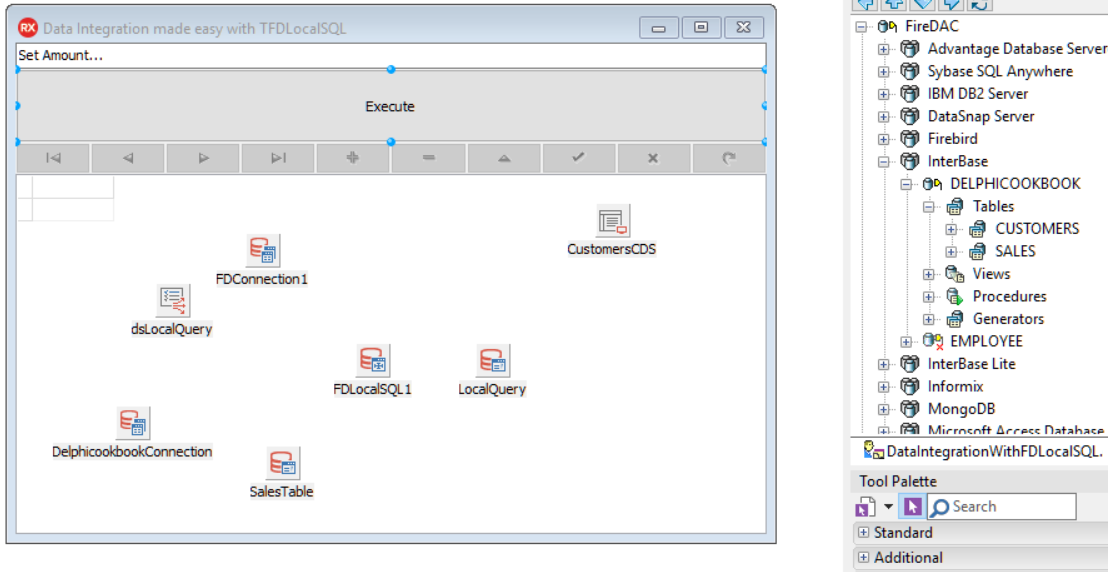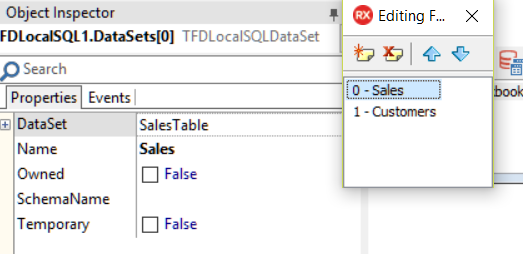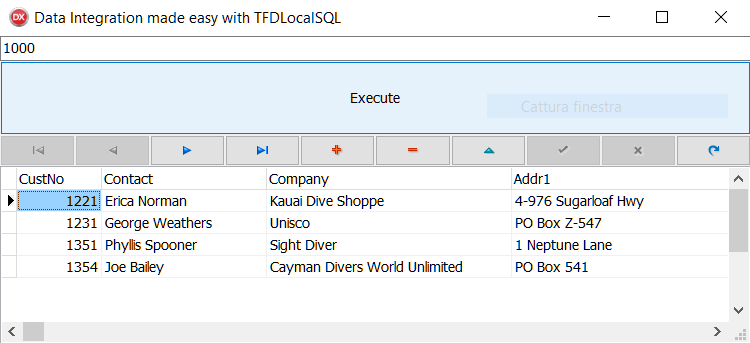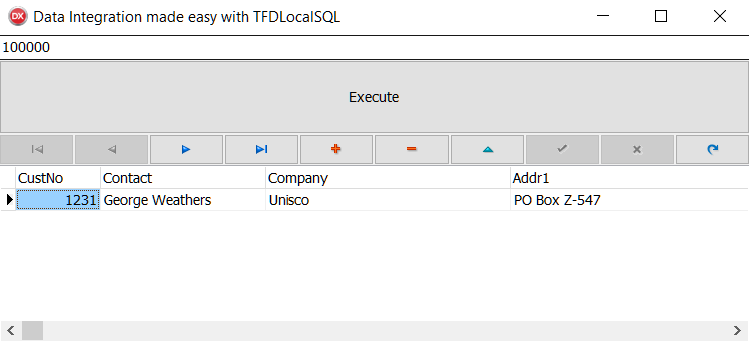As Wikipedia says:
Traditionally, information must be stored in a single database with a single schema, but many organizations store information on multiple databases, so they need a way to retrieve data from different sources and assemble it in a unified way.
FireDAC provides a component that permits you to execute SQL statements against any dataset: TFDLocalSQL.
































































